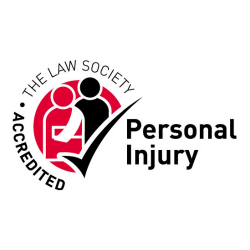
Changes to The Highway Code for Cyclists
On Saturday 29th January 2022 the Government enforced changes to The Highway Code. The changes aim to improve the safety of the most vulnerable road users. Pedestrians, cyclists, horse riders and motorcyclists are all classed as vulnerable road users because they are the most easily injured or even killed in a motor vehicle dominated road space.
Figures released by the Department for Transport (DfT) show that from June 2020 to June 2021, over 4,700 cyclists were either seriously injured or killed on UK roads.
In this article, we explain the changes to The Highway Code for cyclists and how it affects them.
What is The Highway Code?
First published in 1931, The Highway Code is information, advice, guides and mandatory rules for road users in the UK.
Its objective is to promote road safety by containing information about road signs, road markings and vehicle markings etc. The Highway Code applies to all road users including pedestrians, equestrians, cyclists, motorcyclists and drivers.
Changes to the Highway Code for Cyclists
The changes to the Highway Code are to make the UK’s roads safer for the most vulnerable road users and are part of the Department for Transport’s (DfT) strategy to encourage more cycling and walking safely.
Below we highlight the key changes to The Highway Code for cyclists:
- The new ‘hierarchy of road users’ places cyclists second to pedestrians:
- Pedestrians
- Cyclists
- Horse riders
- Motorcyclists
- Cars/taxis
- Vans/minibuses
- Large goods/passenger vehicles
- Cyclists should respect the safety of people walking in shared spaces and are asked to:
- Slow down when necessary and let people walking know they are there e.g., by ringing their bell
- Not pass a horse on the horse’s left
- Remember people walking may be deaf, blind or partially sighted
- Not pass people walking, riding a horse or a horse-drawn vehicle closely or at high speed, particularly from behind
- Position in the road when cycling:
- Cyclists can be in the centre of their lane on a quiet road, in slow moving traffic and at the approach to junctions or narrow roads
- Keep at least 0.5 metres away from the kerb edge (and further where it is safe) when riding on busy roads with vehicles moving faster than them.
- Cyclists riding in groups:
- Cyclists riding in groups should be considerate of the needs of the other road users
- Can ride 2 abreast – This can be safer to do so when in larger groups or accompanying children or less experienced cyclists
- Vehicles must leave at least 1.5 metres room when passing cyclists
For further information on changes to The Highway Code for cyclists and other road users please refer to Gov.UK.
Under the new rules drivers are urged to take more care around vulnerable road users, hoping they will be more considerate of others making roads safer and reducing the number of injuries and deaths caused by road traffic accidents, as well as having a positive impact on the environment.
Cycling Accident Claim
If you or a loved one have been injured in a cycling accident caused by someone else’s negligence you could be entitled to compensation for the injuries and financial losses sustained.
Cycling accident claims can be complex cases so it’s vital if you decide to pursue a claim, that you instruct a specialist solicitor to represent you. Our experienced Personal Injury Solicitors specialise in cycling accident claims and will guide you through the process step by step.
To make a claim please call our personal injury team on 033 3344 9600 or simply email [email protected] with your request.












